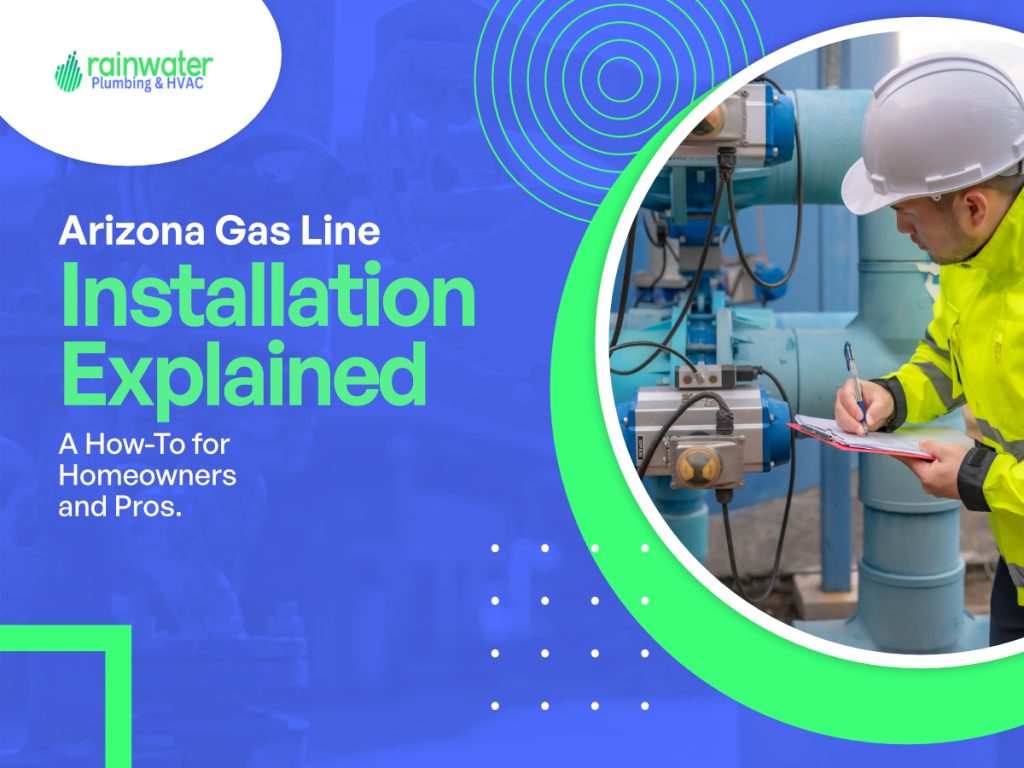Gas lines rarely make the front page of home improvement discussions, but behind every hot shower and warm stovetop meal lies a system that deserves your attention. For homeowners in Arizona, understanding gas line installation isn’t just a bonus; it’s a necessity for safety, efficiency, and long-term peace of mind.
From outdoor kitchens to water heaters, knowing how your gas system works is the first step in making smarter upgrades. Whether you’re building new or remodeling your space, here’s a detailed guide from the licensed plumbers at Rainwater Plumbing to help you understand gas line installation from start to finish.
Start With a Clear Plan
Every successful gas line installation in Arizona starts with planning. That means taking into account:- The number of gas-powered appliances
- Future expansion (such as an outdoor grill or firepit)
- Pipe routing to minimize exposure and bends
- Pressure needs for consistent performance
Choose Materials That Match Arizona Conditions
Not all pipes are created equal. Choosing the right piping depends on the layout, safety requirements, and Arizona’s climate.- Black iron pipe remains a durable and fire-resistant option for indoor runs
- Corrugated stainless steel tubing (CSST) is useful when flexibility and faster installation matter
- Polyethylene (PE) pipe is ideal for underground runs, resisting corrosion and soil acidity
Understand Permit and Inspection Requirements
Arizona’s plumbing codes are strict for good reason. Gas leaks can pose major risks, and compliance ensures the system works properly for years to come. Gas line installations usually require:- A permit from the city or county
- Scheduled inspections after pressure testing
- Adherence to city-specific codes (which may differ from general state rules)
The Installation Process, Step by Step
Here’s a basic overview of how gas lines are typically installed:- Shut off the Main Supply: Work begins only when the gas is safely off.
- Route the Pipes or Tubing: Pipes are cut, fitted, and secured as per the layout.
- Seal the Connections: Each joint is tightened with gas-rated sealants or thread tape.
- Pressure Testing: The entire line is sealed and tested for leaks using air pressure.
- Final Inspection: A city inspector verifies code compliance and safety.
- Activation: Once approved, the gas is turned on and appliances are checked.
Why Inspections Aren’t Just a One-Time Thing
Initial inspections during installation are critical. However, routine checks afterward matter just as much. Gas lines can experience:- Settling and shifting from Arizona’s dry soil
- Corrosion, especially in underground lines
- Damage from tree roots, rodents, or nearby construction
When to Call a Professional Immediately
If you experience any of the following, contact a licensed plumber right away:- Rotten egg smell (sulfur or natural gas odor)
- Hissing sounds near gas appliances
- Pilot lights that won’t stay on
- Visible rust, cracking, or moisture near a gas pipe
Benefits of Hiring Licensed Plumbers in Chandler
Attempting a DIY gas line job isn’t just risky. In many Arizona cities, it is illegal without proper certification. With Rainwater Plumbing, you get:- Licensed, bonded, and insured technicians (ROC #339739)
- Full familiarity with Arizona plumbing codes
- Professional-grade tools and parts
- Honest pricing with no surprises

